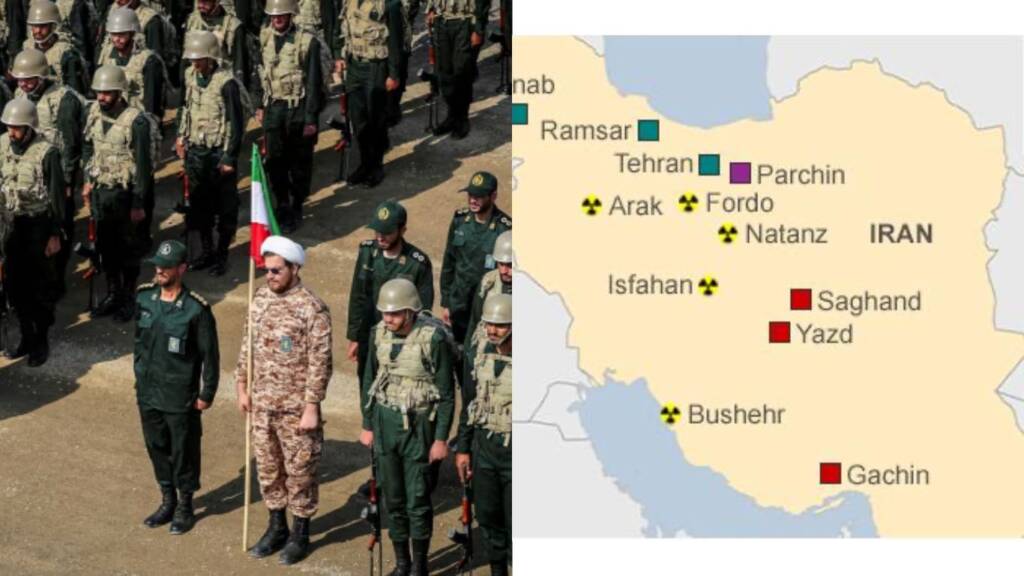In a surprise and unexpected move, Iran has started military exercises all over the country. The military exercises are predominately based on safeguarding the nuclear facilities, especially the Natanz nuclear facility. The Islamic Revolutionary Guard Corps (IRGC) and the regular army are both taking part in joint drills called “Eqtedar” (meaning “might” in the Persian language). The focus of the drills is heavily on defending the nuclear site from aerial strikes.
The IRGC specifically practices how to protect the facility from various air threats while dealing with electronic warfare challenges. The exercises aren’t limited to just the Natanz area – they’ll be happening across different parts of Iran until mid-March. Different branches of Iran’s military forces are involved, including their navy and the Basij (a paramilitary group). According to IRGC spokesman Ali Mohammad Naini, these drills were organized in response to what he called “new security threats,” though he didn’t provide any specific details about what these threats might be. However, it is apparent that the drills are focused on keeping the nuclear facilities safe against potential strikes from Israel and the US.
The conventional and non-conventional confrontation between Iran and Israel during the Israel-Hamas and Israel-Hezbollah war last year has significantly dented the forward defence created in the form of proxies in the region. The political, economic, and diplomatic situation of Iran is already at a low point. The theological regime is facing a leadership crisis due to the sudden death of Ebrahim Raisi and the illness of the Supreme Leader Ayatollah Khamenei. The speculations about the next ayatollah are a hot topic in Iran. Politically, the reformists and conservating debates are also high, where the reformists are ready to engage with Western countries, knowing the political and economic situation of the country. In contrast, the conservatives are in strong opposition to such engagements.
Meanwhile economically, Iran is under stringent sanctions from the West, especially from the US, which contracted the Iranian economy since the 1990s. Iran has tried to mitigate the effect by building cardinal relations with China and Russia but has failed to eliminate the economic problems. The Russia-Ukraine war and its own involvement in the war in West Asia has put more strain on the Iranian Economy.
On the diplomatic front, the fall of the Assad government in Syria is a big blow to the Iranian establishment in the region. The Iranian proxies have already been crushed by the Israel Defence Forces by eliminating and decapitating the leaders of these Iranian-backed militias. Regionally, Iranian proxies have been limited, and Russians are more focused on Ukraine and safeguarding their own establishment in Syria. Internationally, the Trump presidency is back, and Europeans have started seeing the Iranian Nuclear ambitions as a threat to Europe (Emmanuel Macron mentioned this threat specifically in his last speech). Domestically, the political environment is not conducive. Economically, the Iranians are struggling, and socially, Iranians are fighting to bring reforms.
Iran looks to be on the backfoot, and many Western experts believe that the time is right to paralyze the nuclear aspirations of Iran by attacking its nuclear sites. A week ago, the Biden administration discussed the potential plans and options for US attacks on Iranian nuclear facilities. For Iran, developing nuclear weapons is the last resort in order to keep itself a dominant force in the region. However, Iran acquiring the nuclear bomb is against the national interests of Israel, and its Western partners. Biden and his national security team discussed all possible options and scenarios during the discussion. The simulation was for “prudent scenario planning” if Iran takes steps to enrich Uranium to 90 per cent.
The upcoming Trump administration from 20 January is well known for its ‘maximum pressure doctrine’ to cripple Iran. Trump pulled out unequivocally from the Joint Plan of Action, also known as the Iran nuclear deal, in his previous administration. Experts are speculating about a direct US or Israeli attack on Iranian nuclear facilities when Trump takes oath in the White House. Understanding the current Iranian problems at various levels, the US under the Trump administration and Israel under Prime Minister Benjamin Netanyahu are likely to attack to eliminate the nuclear threat originating from Iran.
Iran understands all these upcoming threats, and the recent military drills are part of their defensive preparation. Iranian military facilities are installed deep inside the mountain ranges, and it would be a difficult task for the US and Israel to destroy deep-installed facilities. However, the recent scenario-building and discussions on the potential options for attacks on Iran’s nuclear facilities by the Biden Administration demonstrate their adamant to eliminate the Iranian Nuclear threat.
